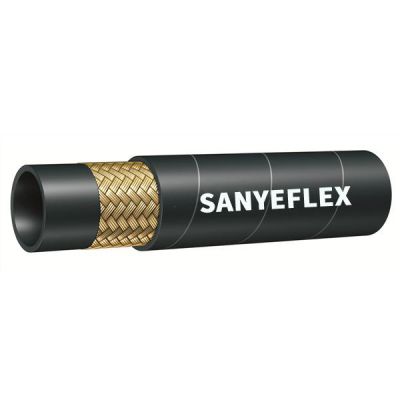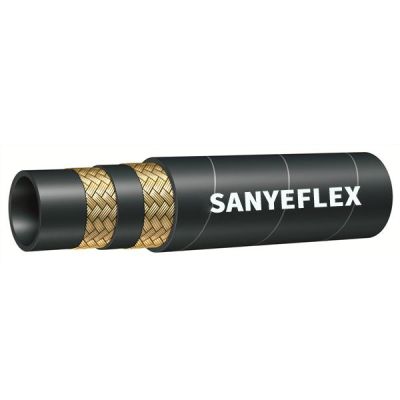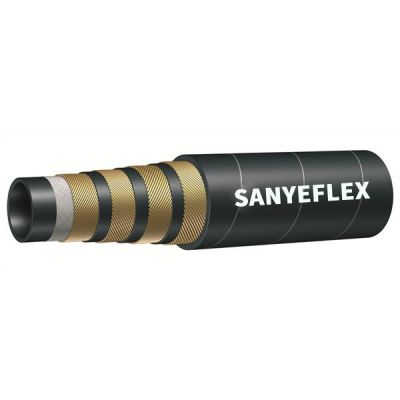Sep. 09, 2024
When it comes to hydraulic systems, one of the most critical components is the hydraulic hose. These hoses are responsible for transmitting fluid power to various parts of machinery, and if they fail, the entire system can come to a standstill. That's why hydraulic hose standards are so essential—they ensure that hoses perform reliably under different conditions and meet specific safety and quality requirements.
Hydraulic hose standards are industry-established guidelines that dictate the performance, dimensions, pressure ratings, and safety requirements for hoses used in hydraulic systems. These standards ensure consistency, safety, and compatibility across various industries, including construction, agriculture, manufacturing, and mining.
These standards are developed by organizations like:
SAE (Society of Automotive Engineers)
ISO (International Organization for Standardization)
DIN (Deutsches Institut für Normung)
Each of these organizations sets specific criteria that hydraulic hoses must meet to be certified. By adhering to these standards, manufacturers can assure customers that their hoses are durable, safe, and suitable for use in demanding industrial environments.
Hydraulic hose standards are important for several reasons:
1. Safety
Hydraulic systems operate under extreme pressures, and a hose failure could lead to equipment damage, environmental hazards, or even personal injury. Standards ensure that hoses can withstand the pressure, temperature, and environmental conditions they're subjected to, reducing the risk of failure.
2. Performance
Hoses that meet industry standards are tested for durability, flexibility, and resistance to factors like abrasion and chemical exposure. This ensures that the hose performs as expected in the field.
3. Compatibility
By following specific dimensions and pressure ratings, hydraulic hose standards ensure that hoses are compatible with various fittings, fluids, and equipment across different brands. This standardization makes it easier for users to replace or interchange hoses when necessary.
4. Longevity
Hoses that meet industry standards typically have a longer lifespan because they are built to withstand harsh operating conditions. Using standard-compliant hoses can reduce downtime and maintenance costs over time.
SAE (Society of Automotive Engineers) Standards
SAE is one of the most widely used standards in the hydraulic hose industry, particularly in North America. SAE standards are denoted by "SAE J" followed by a series of numbers that specify different hose requirements.
Here are a few key SAE standards:
SAE 100R1: This standard covers single-wire braided hoses that are used in hydraulic systems requiring low to medium pressures. These hoses are typically used for petroleum-based fluids.
SAE 100R2: A double-wire braided hose that is suitable for higher pressure applications than the 100R1 standard. This hose is commonly used in construction and industrial equipment.
SAE 100R4: This standard is for hoses used in low-pressure applications, such as return lines and suction lines. These hoses have a thicker wall and are designed to handle low pressure with ease.
SAE 100R12: This covers four-wire spiral hoses used in very high-pressure applications. These hoses are durable and designed for heavy-duty applications like mining and construction.
ISO (International Organization for Standardization) Standards
ISO standards are used worldwide and focus on ensuring that hydraulic hoses are safe, reliable, and perform consistently across industries. One of the most popular ISO standards for hydraulic hoses is ISO 18752, which classifies hoses by their pressure range and performance rather than construction.
Key ISO standard features:
ISO 18752: This standard classifies hoses based on pressure ratings (500-3500 psi), regardless of how they are constructed (e.g., braided or spiral). It focuses on performance metrics such as impulse testing and temperature resistance.
DIN (Deutsches Institut für Normung) Standards
DIN standards are mainly used in Europe and are known for their rigorous testing requirements. DIN hoses are typically rated for higher pressures than comparable SAE standards, and they are often used in heavy-duty industrial applications.
DIN EN 853: This standard applies to single-wire and double-wire braided hoses. It specifies requirements for dimensions, performance, and testing.
DIN EN 856: A standard for four-wire and six-wire spiral hoses. These hoses are used in very high-pressure environments, such as construction and mining.
To meet the stringent requirements of hydraulic hose standards, hoses are subjected to a variety of tests to ensure their durability, safety, and performance. Here are a few common tests:
1. Impulse Test
Impulse testing subjects the hose to alternating pressures to simulate real-world conditions. Hoses are tested up to several hundred thousand cycles to ensure they can withstand repeated pressure fluctuations without failure.
2. Burst Test
This test measures the maximum pressure the hose can withstand before bursting. It ensures that the hose is safe to use at its rated working pressure.
3. Cold Flexibility Test
Some applications require hydraulic hoses to be flexible in cold environments. This test checks whether hoses can bend and flex at low temperatures without cracking.
4. Abrasion Resistance Test
Hydraulic hoses often operate in environments where they rub against other surfaces or components. The abrasion resistance test measures how well the hose can withstand this wear and tear.
When choosing a hydraulic hose, understanding the relevant standards is crucial for making the right selection. Here's what to consider:
1. Application
Different hoses are designed for different applications. For instance, a hose that meets the SAE 100R2 standard might be perfect for medium-pressure construction equipment, while a DIN EN 856 hose may be better suited for high-pressure, heavy-duty mining applications.
2. Pressure Rating
Always select a hose that meets or exceeds the pressure requirements of your hydraulic system. Over-pressurizing a hose that isn't rated for high pressure can lead to dangerous failures.
3. Temperature Tolerance
Hoses are subjected to extreme temperatures in many applications. Choose a hose that meets the temperature requirements based on the standards it complies with. For example, ISO 18752 standards include temperature ratings as part of their performance criteria.
4. Fluid Compatibility
Check that the hose material is compatible with the hydraulic fluids used in your system. Standards like SAE and ISO provide guidelines on fluid compatibility.
Hydraulic hose standards are vital to ensuring the safety, reliability, and performance of hydraulic systems in industrial applications. Whether you're working with construction equipment, agricultural machinery, or manufacturing systems, it's essential to select hoses that meet the right standards for your application. By understanding the most commonly used standards—such as SAE, ISO, and DIN—you can make informed decisions that improve the efficiency and longevity of your equipment.
Always consult the manufacturer's recommendations and ensure that the hoses you use are fully compliant with the industry standards that apply to your specific needs.
1. What does SAE stand for in hydraulic hose standards?
SAE stands for the Society of Automotive Engineers, an organization that develops standards for various industries, including hydraulic hoses.
2. What is the difference between SAE and ISO standards?
SAE standards are more common in North America and focus on the construction of hoses, while ISO standards are used globally and emphasize performance classifications.
3. How do I know which hydraulic hose standard is right for my equipment?
Refer to the pressure, temperature, and application requirements of your system. Choose a hose that meets or exceeds those requirements based on the standards it complies with.
4. Can I use a hose that meets DIN standards in North America?
Yes, DIN hoses can be used in North America as long as they meet the pressure and performance requirements of your application. However, SAE standards are more commonly used in this region.
5. How often should hydraulic hoses be replaced?
It depends on the operating conditions, but it's recommended to inspect hoses regularly and replace them every 1-2 years or when they show signs of wear. Always follow manufacturer guidelines.
Our Customer
Tel.: +86 400 0318 111
Email: admin@sanyeflex.com
Add.: #218 Zhongke Street, High-tech Zone, Hengshui City, Hebei Province, China


